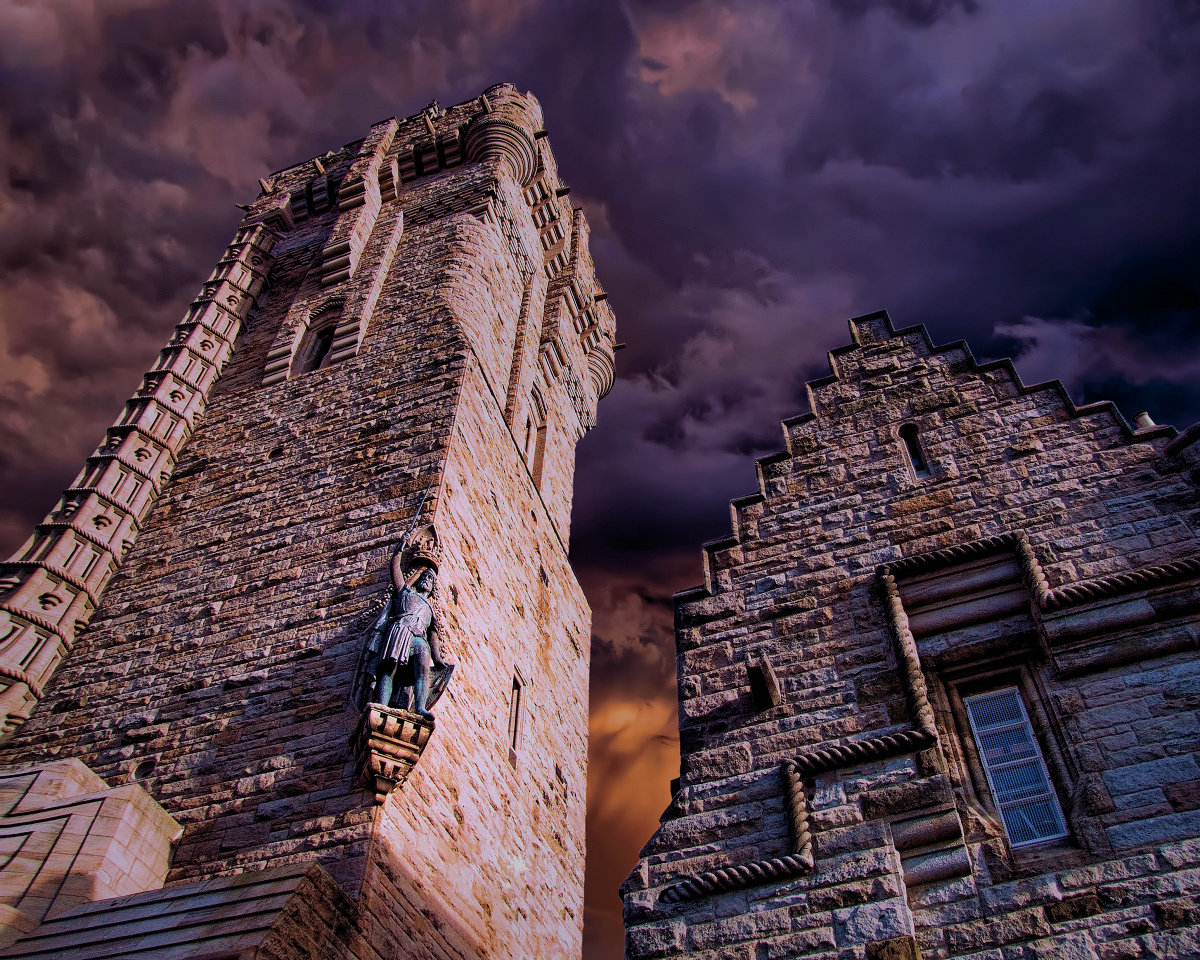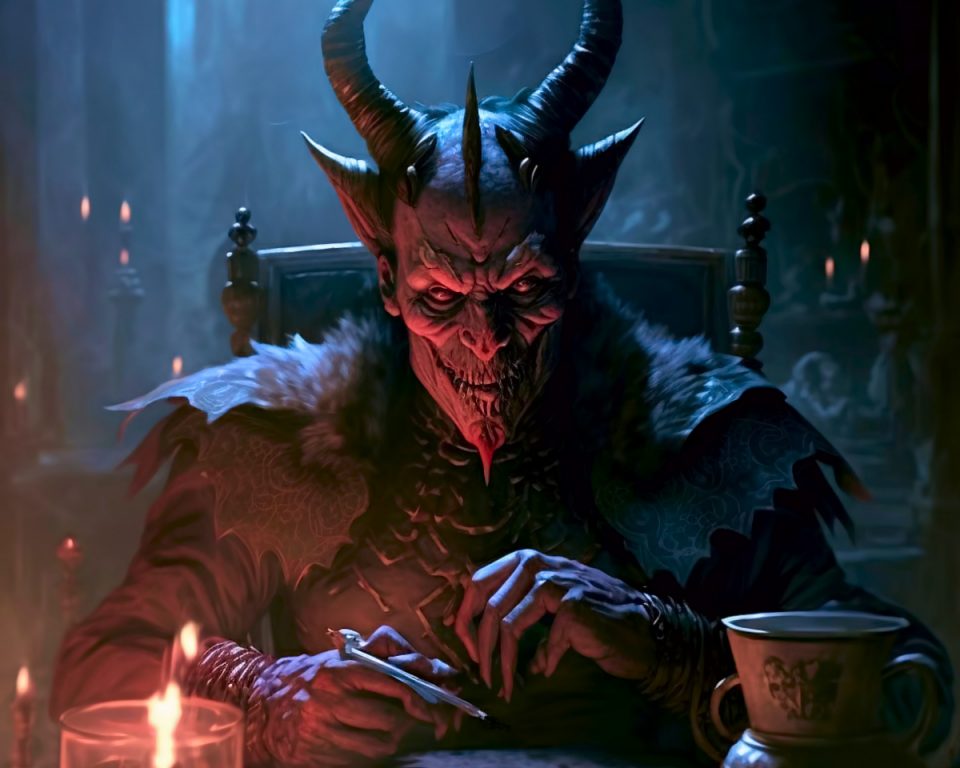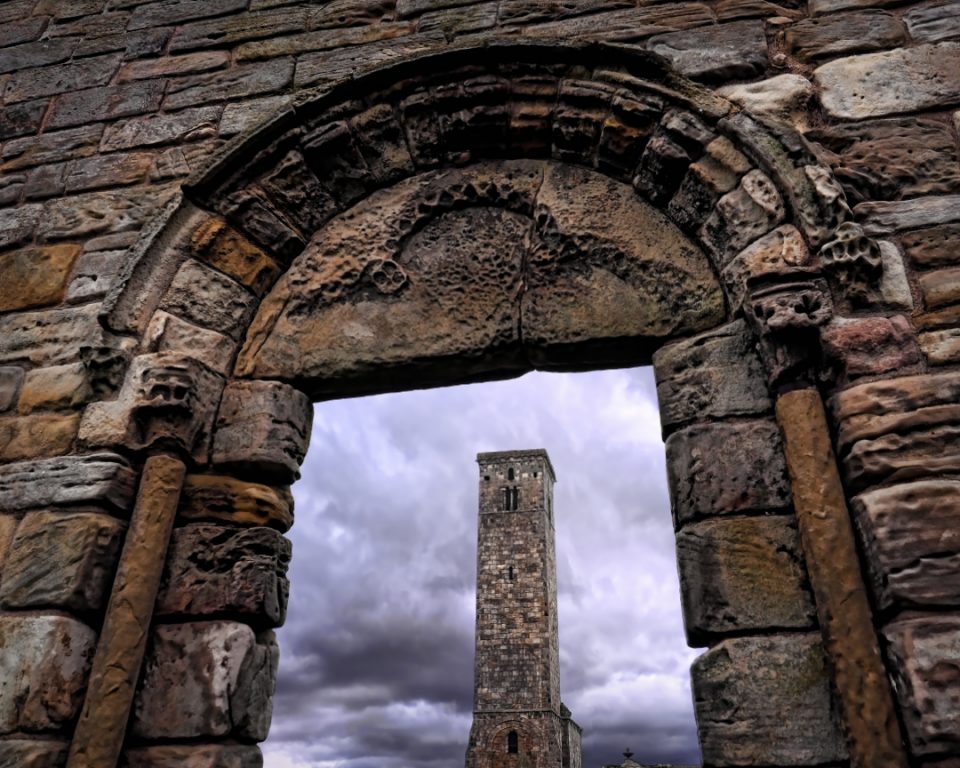William Wallace was executed on the 23rd of August 1305. He began life as an obscure laird or lord, one of Scotland’s lesser nobility. Wallace was never king of Scotland but for a short while, he led the country. He was a soldier and yet he fought in relatively few battles. So what caused his rise from obscurity to becoming the man many people consider to be Scotland’s greatest hero? And why does his ghost still haunt the halls of Ardrossan castle to this day?
Scotland in Crisis
The year was 1286. Alexander III King of Scots set off from Edinburgh in a storm. He was heading to Dumferline where his new bride was ensconced. No-one knows what happened that night as he rode through the raging gale. Perhaps his horse stumbled in the darkness or perhaps a strong gust blew the horse and rider over the cliff. Daybreak brought a grim discovery. The King and his horse lay dead on the Fife shoreline.
Alexander had a peaceful reign: twenty years without war and a time of prosperity buoyed up by a thriving export trade. Alas, his personal life had been less favourable. He had outlived all his children and his only surviving heir was a babe, his granddaughter, Margaret, the Maid of Norway. But fate was about to deliver a cruel blow- she died en route from Norway. Scotland was plunged into chaos.
Edward Hammer of the Scots
With twelve contenders for the throne, Scotland stood at the brink of a bloody civil war. So the nobles turned to Edward I of England to mediate in the contest. Edward was a man of ambition who was not content with just the crown of England. He had been at war with France and had annexed Wales. No doubt, he rubbed his hands in glee at the prize which lay before him. He installed John Balliol as a puppet King and claimed overlordship of Scotland.
The Scottish Nobles rebelled and sent Balliol packing. This was the opportunity Edward sought. He gathered an army and crushed the Scots troops. He captured the Stone of Scone, Scotland’s coronation stone, otherwise known as the Stone of Destiny and sent it to Westminister. Then, he placed his own officials into Scotland’s key positions of authority. Finally, he ordered all the Scottish nobility to swear an oath of fealty to their conquer. Most complied, unwilling to give up their lands. But there were a few who were unwilling to bend the knee to the English King.
The Rise of William Wallace
There is some debate about William Wallace’s early years. He was born sometime around 1270, the second son of a minor lord. Some say his father was Malcolm, others that his father was Alan. Both Elderslie in Renfrew and Ellerslie in Ayrshire lay claim to being his birthplace. He is said to have begun his education under the tutelage of his uncle who was a priest near Dunipace near Stirling. He went on to complete his education in Dundee. It was here that his troubles began. He killed the English Constable of Dundee Castle who had insulted him. Then he killed two English soldiers in Ayr who took issue with him poaching fish.
Wallace soon found himself outlawed and made the Ettrick Forest his base. According to some sources, Wallace had married a young heiress named Marion Braidfoot. He was visiting her and their baby daughter when he came to the attention of the English guard. He barely escaped with his life. Alas, things did not go so well for Marion. The Sheriff of Lanark, Sir William Heselrig, one of Edward’s henchmen, had her executed. That night Wallace and his men entered Lanark Castle and took their revenge. Heselrig and two hundred and forty soldiers and their train died in the resulting massacre.
William Wallace attacks Ardrossan Castle
In 1296 William Wallace successfully captured Ardrossan castle from the English. Wallace set fire to some of the buildings in the nearby town. Some of the English garrison went out to investigate and promptly found themselves being dragged into the shadows. Then Wallace and his men slit their throats. With the castle garrison depleted, Wallace was able to breach the castle and the entire garrison was put to the sword. The bodies were dumped in the cellar, which later become known as Wallace’s Larder.
William Wallace and his transformation from Guerrilla fighter to Battle Commander
William Wallace was rapidly emerging as a capable leader of men prepared to fight for their freedom at a time when good leaders willing to stand up to Edward Longshanks was in short supply. He was limited in his resources and was therefore forced to wage a guerrilla war on his foes. Soon he came to the attention of his betters. The nobility had banded together to oust their oppressors but this fizzled out in Irvine on the 1st July 1297 without a sword being raised. These were indeed bleak times for Scotland.
However, rebellion was stirring in the North. Sir Andrew Murray mustered forces in Easter Ross and Moray and led them south. Wallace joined forces with Murray at Dundee whereupon they set off southwards to Stirling. Stirling had long been regarded as the key to defending Scotland.
The Battle of Stirling Bridge
William Warrene, Earl of Surrey, led the English army. It seems that he had become overconfident and thought that he was dealing with a rabble. The Scottish troops were infantrymen, armed principally with twelve-foot spears. Their army was in every way inferior to the grand feudal host mustering on the opposite side of the River Forth. There is no solid information about the size of the Scottish army, but it is generally believed to have been rather smaller than the English force of 50,000 men. But the Scots had two major advantages: they knew the terrain and their motivation was high. After all, they were fighting for their freedom.
Wallace and Murray took up a position at the foot of the Abbey Craig, about a mile north of the narrow wooden bridge across the River Forth. The river crossing here was the most strategically vital in Scotland. Below Stirling the river was too deep to cross, and to the west lay the marsh known as Flanders Moss. However, the bridge at Stirling was only broad enough to allow two horsemen to cross abreast.
William Wallace and Victory
On the morning of 12th September, the English cavalry began to cross the bridge. From their vantage point on Abbey Craig, Wallace and Murray watched the advancing English forces fan out on the mossy ground below. At 11 am the Scottish Army charged into the English ranks. Caught off guard, the English troops tried to retreat but their escape route was blocked by their own advancing comrades, crossing the bridge. In desperation, some plunged into the river only to drown, weighed down by their heavy armour. The English army had been crushed. Among the dead was the hated English treasurer, Hugh Cressingham!
Alas, Andrew Murray also took a fatal blow in the battle.
The Aftermath of Stirling Bridge
This left William Wallace as the sole hero of the day. The victorious army pressed forward and by October 1297, not one English soldier remained in Scotland. But the retreating English Army adopted a scorched earth policy as they fled. With the onset of winter, the people of Scotland were left facing famine. Meanwhile, Wallace and the Scots Army crossed the border and ravaged northern England. Of course, Edward of England was not going to stand back and let this happen.
Wallace was knighted and declared the Guardian of the Realm, acting for John Balliol. This honour would probably have been bestowed upon Andrew Murray had he lived. The Murray family were better connected than Wallace who had risen from obscurity. Alas, Wallace’s victory was short-lived. Edward of England mustered another army.
William Wallace and the Battle of Falkirk
The forces clashed at the Battle of Falkirk on the 12th July 1298. In the tales that were later told of Wallace, he was alleged to have said prior to the battle: ‘I hae brocht ye to the ring, now see if ye can dance’. But this was the dance of death. Wallace underestimated Edward’s battle tactics. Amongst the English fighting force was a contingent of Welsh archers. Their arrows rained death on the Scots spearmen.
A Reversal in Fortune
The tide had turned against Wallace. He resigned his role as guardian of the kingdom with Robert the Bruce and John Comyn being appointed in his stead. Wallace was assigned as an envoy for the Scots to the courts of Europe. He visited the Courts of King Philip IV of France to sue for military aid and then moved on to the Papal Courts in Rome. The promised help from France was short-lived. A rebellion broke out in Flanders and the French were forced to deal with matters on their own doorstep. The Scottish leaders were forced to capitulate and recognised Edward as overlord in 1304. However, Wallace would not compromise. Unlike the nobles, who would switch sides or plicate the English, he had nothing to lose, except his life. He signed his own death warrant by refusing to submit.
The Betrayal of William Wallace
William Wallace was once more returned to his outlaw status by the English government in Scotland. This meant that his life was forfeit and anyone could kill him with impunity. He continued his resistance against the English. Then on August 3rd 1305, he was captured at Robroyston, near Glasgow. His captor was a Scottish knight, Sir John Menteith. Although he goes down in history as the betrayer of William Wallace, he later put his seal to the Declaration of Arbroath in 1320.
Wallace was taken initially to Dumbarton Castle but was promptly moved to London for a show trial at Westminster Hall on the 23rd August 1305. As an outlaw, no trial was required for Wallace, but Edward was a tyrant and his skill lay in his sword, not his understanding of people. Perhaps he thought that by branding Wallace as a traitor, he would destroy his reputation.
At his trial, he had no lawyers or a jury. He was forbidden to speak although when accused of being a traitor he denied it: he had never been Edward’s subject! Of course, the outcome of the trial was a foregone conclusion. He was found guilty and sentenced to be executed.
The Martyrdom of William Wallace
Wallace was wrapped in ox-hide to prevent him from being ripped apart and dragged through the streets of London to Smithfield. There he was hanged but cut down while still alive. Next, he was mutilated, disembowelled and emasculated. Then, his entrails were cast in the fire and he was beheaded. Finally, his corpse was cut into quarters. His head was set on a pole on London bridge. Then his other parts were sent to Newcastle, Berwick, Perth and Stirling, as a dire warning to the Scots. Perhaps Edward had destroyed the man, but he had enhanced the myth. Wallace had become a martyr, the very symbol of Scotland’s struggle for freedom.
Willam Wallace the Myth
Wallace might have passed out of the annuls of Scottish history as a minor character had Edward decided to dispose of him silently. But Edward was a warlord who ruled by fear. Instead, he created a martyr. In time Wallace’s exploits were written into a poem by the bard Blind Harry in 1470. This ensured that William Wallace would go down in history as a hero. In time the Victorians would read the poem and it would catch their imagination. A monument was built at Abbey Craig, the site overlooking the Battle of Stirling Bridge. Then, of course, came the Mel Gibson film, Braveheart and William Wallace’s fame became international.
Edward could only hold his power for so long. He may have been a conquering king but even kings are mortal. He died within sight of Scotland, where he had set out to crush another rebellion for waiting in the shadows was another one of Scotland’s great heroes. His name was Robert the Bruce. In 1314 he would crush Edward’s son at the Battle of Bannockburn.
William Wallace’s spirit is still said to roam his beloved Scotland and on stormy nights he is said to appear in the ruins of Ardrossan Castle.
Please feel free to share the spooky by using the links below or leave us a message in the comments box.




